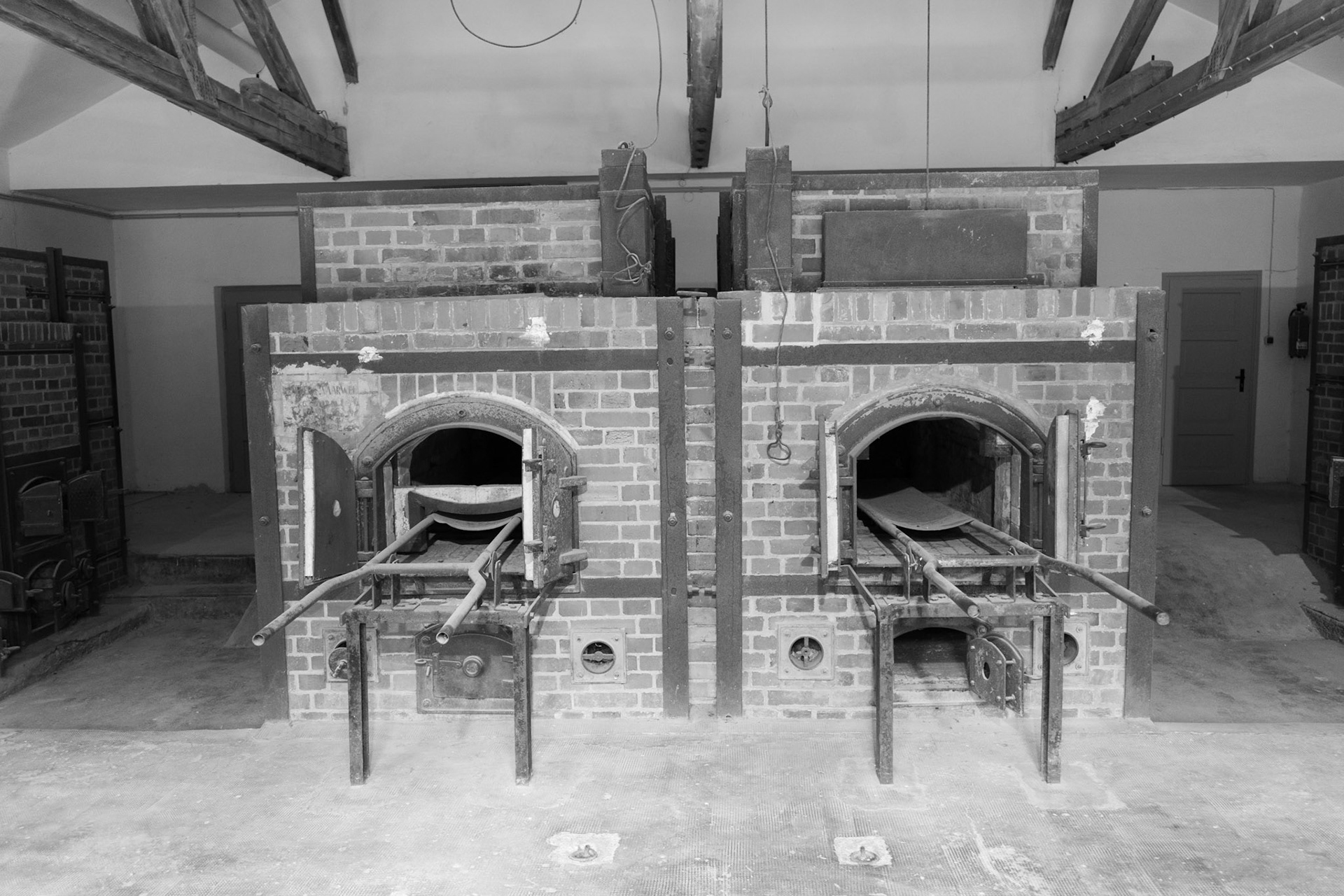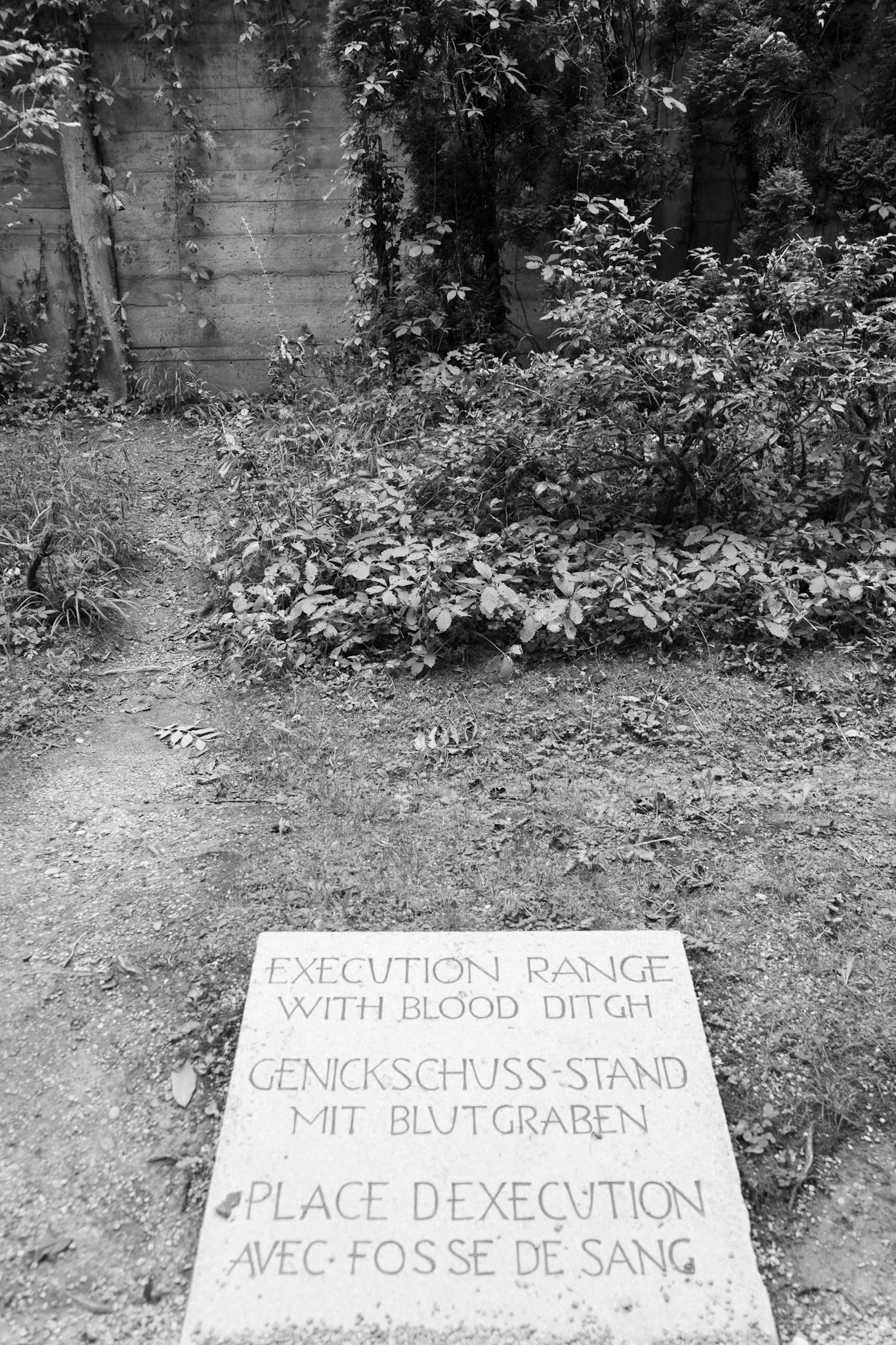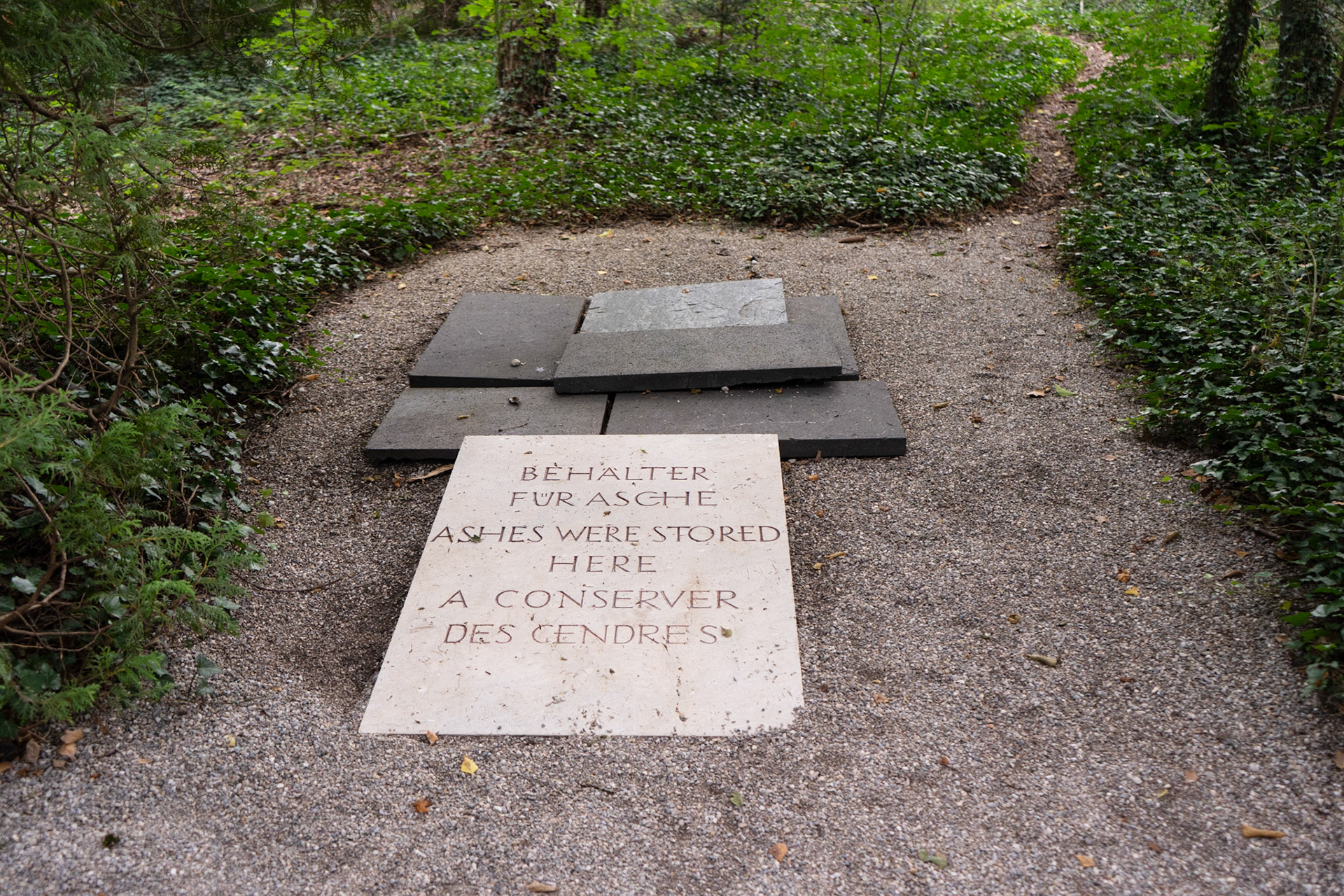
The front gate to the camp. Dachau was opened for operation on March 22, 1933.

The front gate which translates to “Work Makes You Free”. This sign is not the original. it was stolen and then recovered. The original is on display in the museum on the grounds.

This is a recreation of the original prisoner barracks. All the barracks were torn down after liberation and two were rebuilt. Dachau served as a refugee camp after the war where some prisoners stayed until the 1960s.

This image shows the two rebuilt barracks in their original locations. The trees are original and were planted by the Nazis to make it look pretty for propaganda shots.

Inside the barracks were these bunks for the prisoners. These are recreated to the original specification. The camp was built to house 3000-4000 prisoners. When the camp was liberated on 4/29/45, there were over 30,000 prisoners being held. The bunks were compressed over time. These were the first bunks and were roomy by comparison.

The first set of bunks also included shelves for the few personal items the prisoners were allowed to keep.

As the camp became more crowded, the bunks became more compressed.

Another view of the most compressed bunks.

This is the only washroom each barrack had. Two basins were originally intended to support over 90 prisoners.

After the barracks were torn down, they preserved the area where the originals were. There were 36 barracks on the grounds.

Watchtower with fencing.

The fence around the main camp area was electrified. These fences are not original.

Closeup of the electrified fence (not original)

This stone was erected after liberation to memorialize the crematorium on the grounds. Dachau has two crematoriums with a total of 6 ovens. Dachau was not intended to be an extermination camp. It became one in 1942 and was primarily used to determine how to exterminate. The inscription on this stone translates to, “Remember how we died here”

This is the 2nd crematorium on the grounds and is all original. The first is still standing as well and is to the side of this one.

Closeup of the 2nd crematorium. The two open slots are where the gas cylinders were inserted. The rectangular shape was a window so the victims of gas could be observed.

The prisoners were stripped of their clothing and shoes and shaved in these rooms. The clothes would be assembled in one area, the shoes in another and the hair in another so they could easily be recycled.

The prisoners were told they were going to take a shower to cleanup. It had more than likely been quite awhile since they had bathed. This room is where they were gathered after being stripped and shaven.

Brausebad translates to washroom. The sign is a ruse to make the prisoner think they were about to enter a shower. The prisoners were led into this room to be gassed.

This is the room where they were gassed. The shower heads in the ceiling were not operational and were there for a ruse. All the shower heads except one have been stolen. The gas actually filled the room from the vents in the floor.

The last original “shower” fixture. The others were stolen.

A vent where the gas flowed into the room

This door from the gas room opened to a room to hold the dead bodies for cremation.

These are the ovens in the original crematorium.

These are the ovens in the larger 2nd crematorium.

There were 4 ovens in the 2nd crematorium.

If you look closely at the wooden beams, you can see hooks. These were used for quick hangings of prisoners.

Behind the crematorium was a place for executions.

The wall was used for shootings and a semi-ravine was built for the blood.

Piles of ashes were found behind the crematorium and memorials were built to honor them after liberation.

A Christian memorial.

This large mound of ashes was discovered after liberation.

This statue represents the unknown victims of Dachau. This statue is in front of the crematorium. The inscription translates to “To honor the dead and to warn the living.”

This bunker was built to hold political prisoners, special prisoners, spies and Nazi officers and solders sentenced to execution.

The bunker had 136 rooms in which to torture or hold prisoners.

This is the firing wall where executions occurred. Prisoners would be lined up against the wall and shot.




































